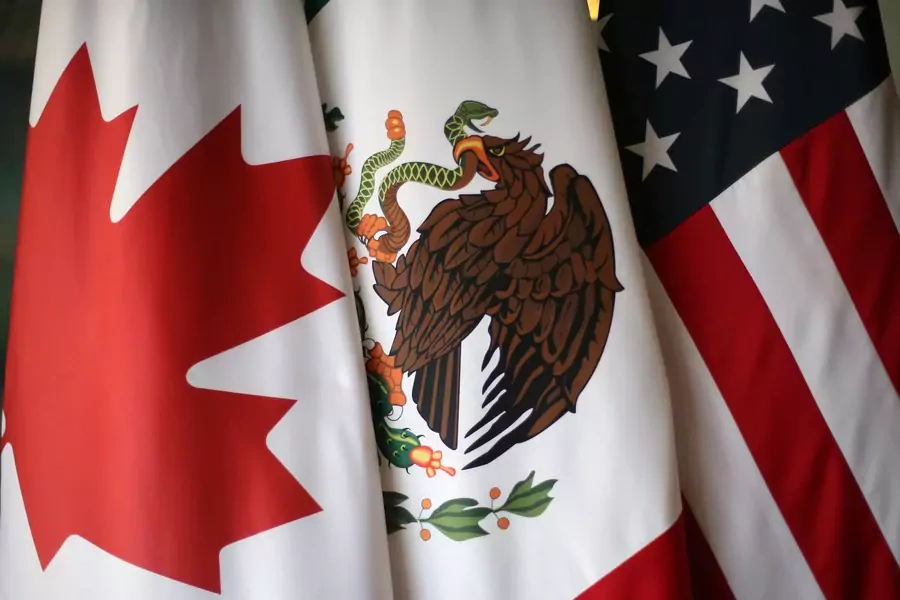NAFTA, China, and the WTO: End of the Beginning, or Beginning of the End?

The next few weeks could be the most consequential for global trade since the final negotiations in December of 1993 that led to the creation of the World Trade Organization (WTO). Depending on the outcome, the United States and the world could begin the serious work needed to find new trade arrangements that acknowledge the relative waning of U.S. economic power and the rise of the rest. Or this month could mark the unraveling of the rules that have shaped global commerce for the past quarter century.
Two events are central—the critical sixth round of the renegotiations of the North American Free Trade Agreement (NAFTA) with Canada and Mexico, which begins in Montreal on January 23; and the expected announcement of a series of U.S. trade actions targeted at China, which could be unveiled during or prior to President Trump’s first State of the Union address on January 30. We should know shortly whether the Trump administration intends to pursue a unilateral approach that will end in disappointment and failure, or will seek common ground with trading partners to address very real challenges.
More on:
The two issues, NAFTA and China, have a common hook for the Trump administration—both are seen as “unbalanced” trade relationships that have harmed the economic interests of the United States (a third, the renegotiation of the U.S.-South Korea trade agreement, or KORUS, starts from the same premise). U.S. Trade Representative Robert Lighthizer has been explicit that the goal of the NAFTA talks is to negotiate a “rebalanced” agreement that will do more to favor the United States. President Trump last week told Chinese President Xi Jinping that the large U.S. trade deficit with China is “not sustainable.”
It is easy to deride the administration’s narrow focus on bilateral trade deficits, and the facile notion that new trade rules alone can do much of anything about the problem. But it is much harder to reject the central premise—that large and growing imports of manufactured goods from China, Mexico, South Korea and elsewhere took a serious toll on U.S. manufacturing output and employment in the 2000s. A new paper by Susan Houseman of the Upjohn Institute argues that U.S. manufacturing took a much bigger hit than is widely understood, and that trade competition (not automation) was the primary culprit.
Creating more balanced outcomes depends mostly on U.S. domestic policies—support for innovation, new investments in infrastructure, educating and training the workforce of the future. The recent cut to U.S. corporate taxes will likely help to attract new investment in the United States. But trade rules also matter, and the administration should be applauded for its focus on ensuring that U.S. manufacturers are in no way disadvantaged in global markets.
The next several weeks will be critical in translating that theory into concrete outcomes. On NAFTA, the Trump administration’s approach so far has been brutally direct—demanding a series of changes to rules for auto trade, government procurement and settlement of disputes that are overtly designed to shift production from Canada and Mexico to the United States. As opening gambits, the proposals may have had a useful “shock and awe” component. But the administration must demonstrate this week that it is prepared to negotiate towards a sensible middle ground in which all three countries can declare some measure of victory.
On China, the administration enjoys strong support from a U.S. business community that is growing increasingly frustrated with China’s heavy-handed treatment of U.S. investors. But that support will wane quickly if the administration announces a series of unilateral sanctions that clearly violate U.S. WTO obligations.
More on:
The administration seems unfortunately captured by the president’s own nostalgia for the #MAGA era when U.S. economic power was such that it could throw its weight around unilaterally and other countries had no choice but to cooperate. That nostalgia was captured in the astonishing statement by the U.S. Trade Representative’s office Friday that the United States had “erred in supporting China’s entry into the WTO on terms that have proven to be ineffective in securing China’s embrace of an open, market-oriented trade regime.”
That statement is simply a willful misreading of the history; anyone who followed the long and difficult negotiations that led to China’s WTO accession knows that the United States drove a hard bargain. And there was simply no plausible way to keep a country as large and economically significant as China outside of the WTO. The failures came later in the lack of follow-up action by both Republican and Democratic presidents.
At this critical juncture, White House officials are offering some encouraging words. A senior official told reporters Friday that the United States wants “a good outcome on NAFTA and KORUS,” and wants to see “serious reform” in the WTO to deal with the rise of China in particular. Both are indeed badly needed.
But the United States will only get there if the Trump administration sheds its love for the symbolism of tough, unilateral actions, and finds ways to work with allies—Canada, Mexico, Japan, the European Union, South Korea and others—on sensible, mutually supported reforms to trade rules. The administration is right—this is a new era in which more balanced arrangements and outcomes are necessary. But the United States needs the help of its friends to get there.
 Online Store
Online Store